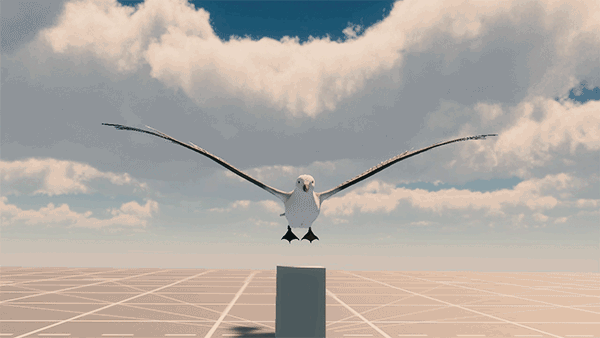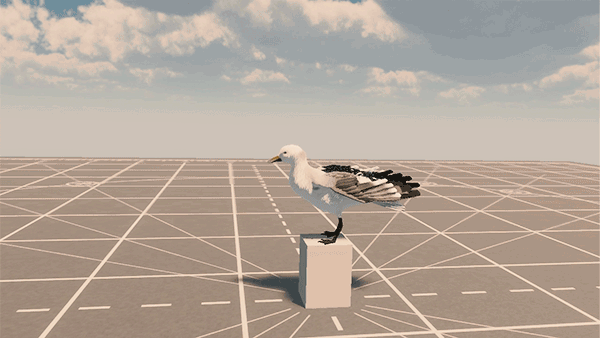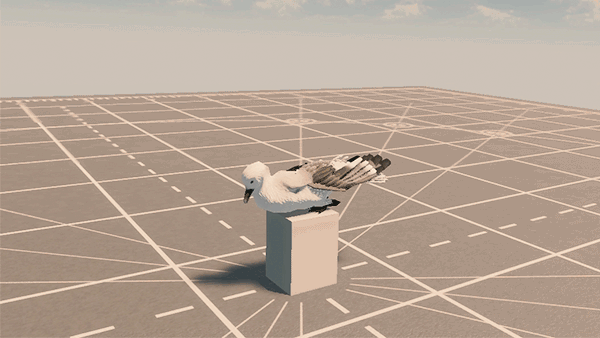Hello Bird-lovers!
Welcome back to our cyclic Devlog where we present various aspects of the Birding Simulator. In this issue, we will tell you a bit about the map and the most important element of the game - birds.

Map
The map in the game will be diversified in terms of vegetation and terrain so that each species of bird can find a place for itself. We can find coniferous and deciduous forests there, meadows, wetlands and others. You have to remember that nature is a dangerous place for birds, so they will avoid places where they may be threatened. For this reason, it will be hard to see songbirds soaring high above trees or waterfowls walking far from the water. There will be camps set up in several places on the map, where the player will be able to rest, buy new equipment, and prepare for the next trip. The player will be able to move between the discovered camps using Fast Travel.

Birds
We plan to put up to 300 different species of birds in the game. These species will be included in 15 orders and 24 families.
During the day, each bird will try to meet its basic needs:
- Eating
- Due to different food preferences, birds will eat different types of food,
- For example, hummingbirds will feed by drinking nectar from flowers, while omnivorous ducks will mainly hunt fish and aquatic invertebrates, but not only.
- Drinking
- Like humans, birds need water to live, but unlike us, they cannot suck water down their throats.
- In most cases, the birds must tilt their head back after drawing water into their mouths to let the gravity drain the water into the stomach.
- The exceptions are pigeons and doves, which can drink like humans.
- Sleeping
- After an exhausting day, each bird will want to take a nap to regenerate,
- With predators in mind, each species sleeps in a place where it feels safest,
- For example, ducks feel safest when sleeping in the water, woodpeckers in recesses of trees. On the other hand, eagles, due to the lack of natural threats in the air, sleep in a tree under the open sky.
Not only the appearance of the birds attracts the attention of birders all over the world. Also the sounds they seem to make can fascinate the audience. Birds sing for a variety of reasons, but by observation, we can determine why they do it:
- Warning calls - sharp and piercing warning signals used by birds when they feel threatened and want to alert comrades of the danger,
- Contact calls - they are characterized by a moderately strong chirping, but not as piercing as warning calls, used, for example, to determine the position of other birds in a flock, in territories, inhabited by different species of birds, contact calls are used to distinguish individual species,
- Mating calls - often complicated and elaborate melodies, sung mainly by males during the mating season, which are to attract an individual of the opposite sex,
There are more types of calls and songs, but we want to leave them to players to discover for themselves. Not all bird species can call and sing. For example, eagles and gulls make sounds like caws, clucks, or screeches.
For birds to survive, they must be careful of the surrounding threats. They consider humans to be one of such threats. When you get too close, there is a very good chance that the bird will notice you and fly away, which can make taking a photo very difficult. Birds can detect us not only by their eyesight but by acting too loud, birds can hear us, consider it a threat, and fly away. Stealth allows you to get much closer to the bird and find a better position to take the photo.

Day and Night system
When night falls and most species of birds go to sleep, not all birds are daytime creatures. Birds like owls and nighthawks are most active at night. Due to poor lighting at night, detecting birds may be a bit difficult, so when trying to take photos after dusk, it will be worth taking a thermal camera with you and arming the camera with a flash. Be sure to use the flash occasionally or only when necessary, too much light can limit your ability to hunt night birds.

